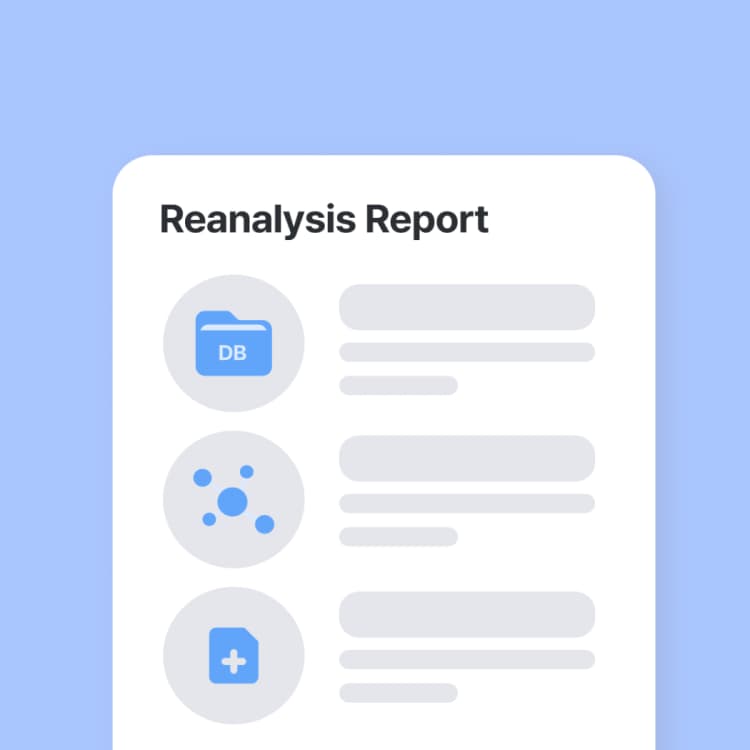Limitation of Microarrays : Rare disease diagnosis
- Insights | 23. 07. 19
When it comes to the diagnosis of rare diseases, the advancements in genetic testing technologies have opened up new possibilities. Microarray testing, a powerful tool in genetic analysis, offers valuable insights into the genetic landscape of individuals with undiagnosed conditions.

However, it’s important to acknowledge that like any diagnostic method, microarray also has its limitations. In this article, we explore the limitations of microarray in rare disease diagnosis and shed light on the potential benefits of considering alternative approaches for a more comprehensive evaluation.
Limited Resolution
Microarray primarily focuses on detecting copy number variations (CNVs) and single nucleotide polymorphisms (SNPs) within the genome. While it excels in identifying large-scale chromosomal abnormalities, it may not detect smaller structural variations, such as small insertions or deletions (indels) or certain structural rearrangements. This limitation can result in a potential gap in the diagnosis, as some rare diseases may be attributed to these finer-scale genetic alterations.
Missed Variants
Due to the targeted nature of microarray, it relies on pre-defined probes to detect known genetic variations. Consequently, it may miss novel or rare genetic variants that have not been previously characterized or captured by the probes on the microarray platform. This limitation could lead to false-negative results or incomplete understanding of the genetic basis of a rare disease.
Limited Coverage of Non-Coding Regions
Microarray typically focuses on the coding regions of the genome, where genes are located. However, non-coding regions, which make up a significant portion of the genome, can also harbor critical regulatory elements that influence gene expression and can contribute to rare diseases. The limited coverage of non-coding regions in microarray may restrict the ability to identify pathogenic variants that reside outside of the coding regions.
Lack of Flexibility
Microarray relies on predefined arrays or panels of genetic probes, which means that it may not be easily updated or modified to keep up with the rapidly evolving knowledge of rare disease-associated genetic variations. This lack of flexibility can limit the ability to identify newly discovered disease-causing variants and may require additional testing using alternative approaches.
Advancing Towards Comprehensive Analysis
To overcome the limitations of microarray and provide a more comprehensive evaluation of rare diseases, considering alternative approaches such as whole-exome sequencing (WES) or whole-genome sequencing (WGS) can be beneficial. These methods enable a broader assessment of the entire exome or genome, respectively, allowing for the identification of rare variants, indels, and structural rearrangements that may be missed by microarray.

While microarray has undoubtedly revolutionized the field of rare disease diagnosis, it is crucial to recognize its limitations. Remember, receiving a negative microarray result does not necessarily mean the end of your diagnostic journey. Advances in genetic testing technologies and research are continuously expanding our understanding of rare diseases.

Curious How We Boost Diagnostic Accuracy?
Get the newsletter every month and discover the breakthroughs with the latest reanalysis report.
To ensure a more comprehensive evaluation, individuals and healthcare professionals should consider alternative approaches such as WES or WGS. At 3billion, we specialize in these advanced sequencing methods, offering a comprehensive analysis of the genome to unlock answers for individuals with undiagnosed rare diseases. Take the next step and get a quote today to explore the possibilities of a more comprehensive evaluation!
Check if we can provide you with the most reasonable options!
GET A QUOTE
Do you find this post helpful?
Click the button below to copy and share the link.

Jane Han
Sales and business development professional in healthcare, expanding market share, managing key partnerships, and driving sales growth in the healthcare sector.




